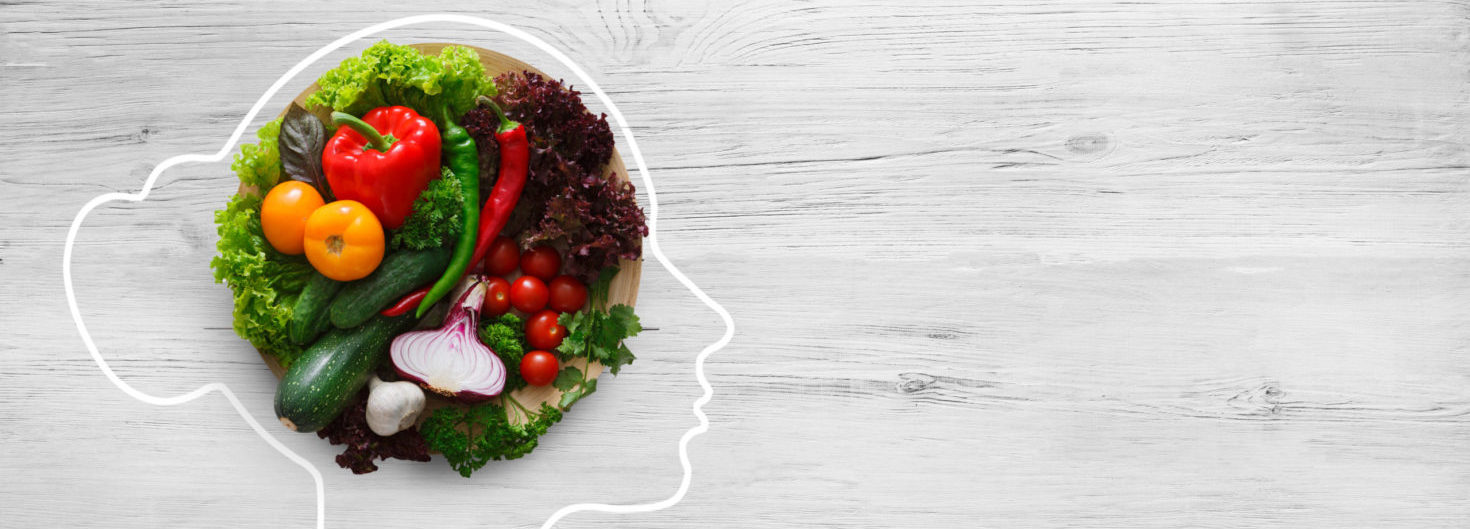
Did you know that the average American consumes 68 grams of added sugar per day?1 That amounts to 17 teaspoons! This comes in the form of simple sugars like sucrose, which is half fructose (fruit sugar) and half glucose. Our ancestors evolved with a sweet tooth, in order to store fuel when food was scarce. But they consumed mostly fruit sugar in the form of whole fruit and natural sweeteners like honey, which contain nutrients like fiber and vitamins and minerals which slow its absorption. They did not have access to refined sugar and additives like high-fructose corn syrup (HFCS), which are linked to type II diabetes, obesity, and in the case of HFCS, fatty liver disease.2
Excess sugar consumption has taken a toll on our collective health in the form of chronic diseases. But it also affects our brain function, mental health and behavior. Sugar is inflammatory; it can feed the bad bugs in our gut, leading to increased gut permeability and neuroinflammation.3 Consuming added sugars can cause spikes in blood sugar, contributing to hyperactivity and mood swings. The effect of sugar on our digestive system can also interfere with neurotransmitter production, impairing serotonin function and leading to feelings of depression and anxiety.
Alternative sweeteners
Some have turned to artificial sweeteners to reduce sugar consumption, such as aspartame (Nutrasweet), sucralose (Splenda) and saccharin (Sweet ‘n’ Low). But many of these are neurotoxins, endocrine disruptors, and carcinogens, and can contribute to hyperactivity and other ADHD behaviors. There are some healthier natural alternative sweeteners that can be beneficial in small amounts
Stevia
One of the best natural sweeteners, stevia comes from the leaves of a plant. It is metabolized by gut bacteria and results in zero calorie consumption. It does not raise blood glucose and can actually support insulin release in response to glucose, causing an anti-hyperglycemic effect.4 Small amounts of stevia consumption has been proven safe in hundreds of studies; it is antioxidant and nontoxic.
Pure stevia leaf extract is very potent and 200 times sweeter than table sugar, though it does have a slight aftertaste. However, there are many products with stevia extract on the market that are highly refined and contain other additives and very little actual stevia. Avoid the small packets like Truvia and Stevia “In the Raw,” which contain fillers like dextrose, maltodextrin, “natural flavors” and added sugar alcohols. Instead, choose pure stevia powder or liquid stevia drops and use sparingly.
Sugar alcohols
Xylitol, erythritol and other sugar alcohols have gained popularity in recent years. They occur naturally in plant parts like birch trees and corncobs. They are not actually alcohol, but are indigestible sugars that amount to zero calories. They are often used in dental products like toothpaste, mouth rinses and chewing gum, as they have been shown to reduce plaque-forming bacteria called mutans streptococci.5 The small amounts of xylitol in these products can have a beneficial effect in preventing and stopping the progress of tooth decay. Consuming large amounts of xylitol and other sugar alcohols in food, however, can cause diarrhea and bloating.
Nature’s best sweeteners
Overall, it’s better to eat whole foods to satisfy a sweet tooth than to consume added sugars. Whole fruits, dates and even an occasional bit of raw honey or maple syrup (sparingly!) are naturally sweet, with vitamins and minerals and fiber to support glucose absorption without spiking blood sugar. Avoid agave nectar, however; even though it is considered low-glycemic, it is highly processed and very high in fructose – even more concentrated than HFCS.6 It also contains natural soapy toxins called saponins (similar to the gluten-free grain quinoa, which is why you need to rinse it).
References
- ODPHP. (2016) 2015-2020 Dietary guidelines for americans-cut down on added sugars. https://health.gov/sites/default/files/2019-10/DGA_Cut-Down-On-Added-Sugars.pdf
- Basaranoglu, M., Basaranoglu, G., & Bugianesi, E. (2015). Carbohydrate intake and nonalcoholic fatty liver disease: fructose as a weapon of mass destruction. Hepatobiliary surgery and nutrition, 4(2), 109–116. https://doi.org/10.3978/j.issn.2304-3881.2014.11.05
- Li, J. M., Yu, R., Zhang, L. P., Wen, S. Y., Wang, S. J., Zhang, X. Y., Xu, Q., & Kong, L. D. (2019). Dietary fructose-induced gut dysbiosis promotes mouse hippocampal neuroinflammation: a benefit of short-chain fatty acids. Microbiome, 7(1), 98. https://doi.org/10.1186/s40168-019-0713-7
- Assaei, R., Mokarram, P., Dastghaib, S., Darbandi, S., Darbandi, M., Zal, F., Akmali, M., & Ranjbar Omrani, G. H. (2016). Hypoglycemic Effect of Aquatic Extract of Stevia in Pancreas of Diabetic Rats: PPARγ-dependent Regulation or Antioxidant Potential. Avicenna journal of medical biotechnology, 8(2), 65–74
- Janakiram, C., Deepan Kumar, C. V., & Joseph, J. (2017). Xylitol in preventing dental caries: A systematic review and meta-analyses. Journal of natural science, biology, and medicine, 8(1), 16–21. https://doi.org/10.4103/0976-9668.198344
- Fallon, S. & Enig, M. (2009) Agave nectar: worse than we thought. Wise traditions: Weston A. Price Foundation. https://www.westonaprice.org/health-topics/modern-foods/agave-nectar-worse-than-we-thought/
